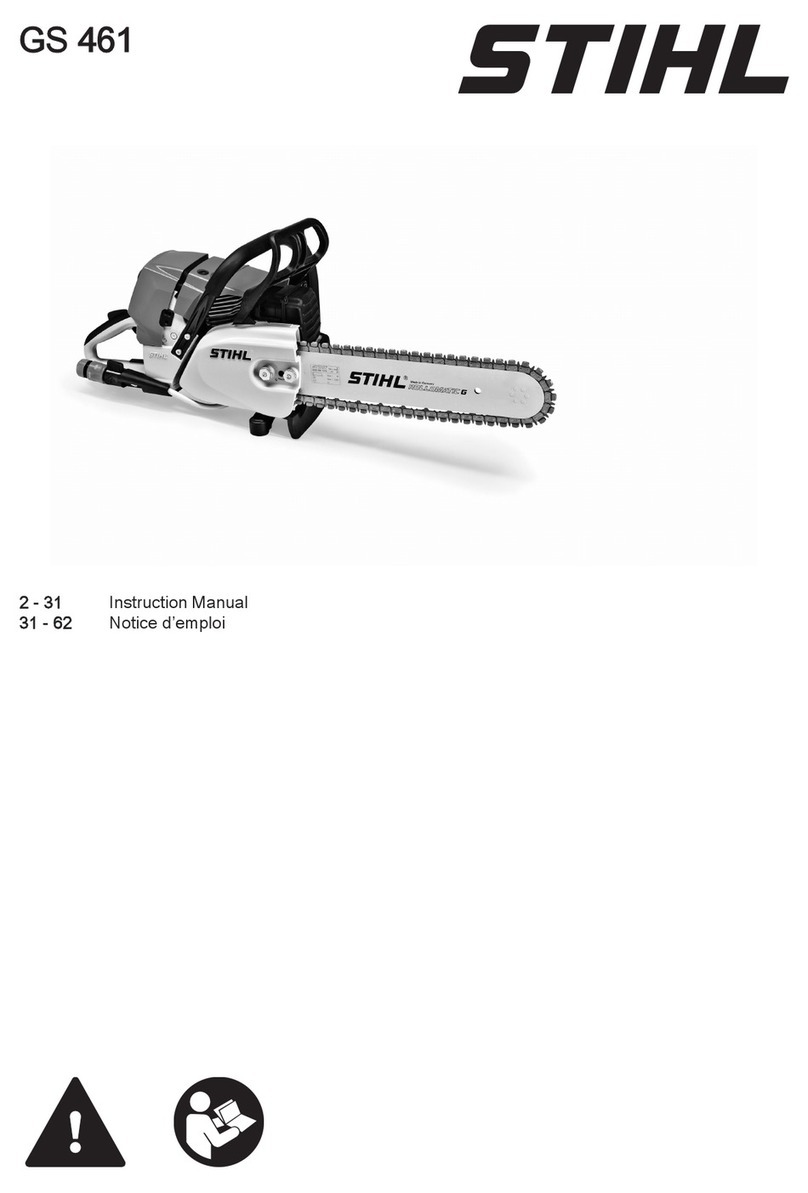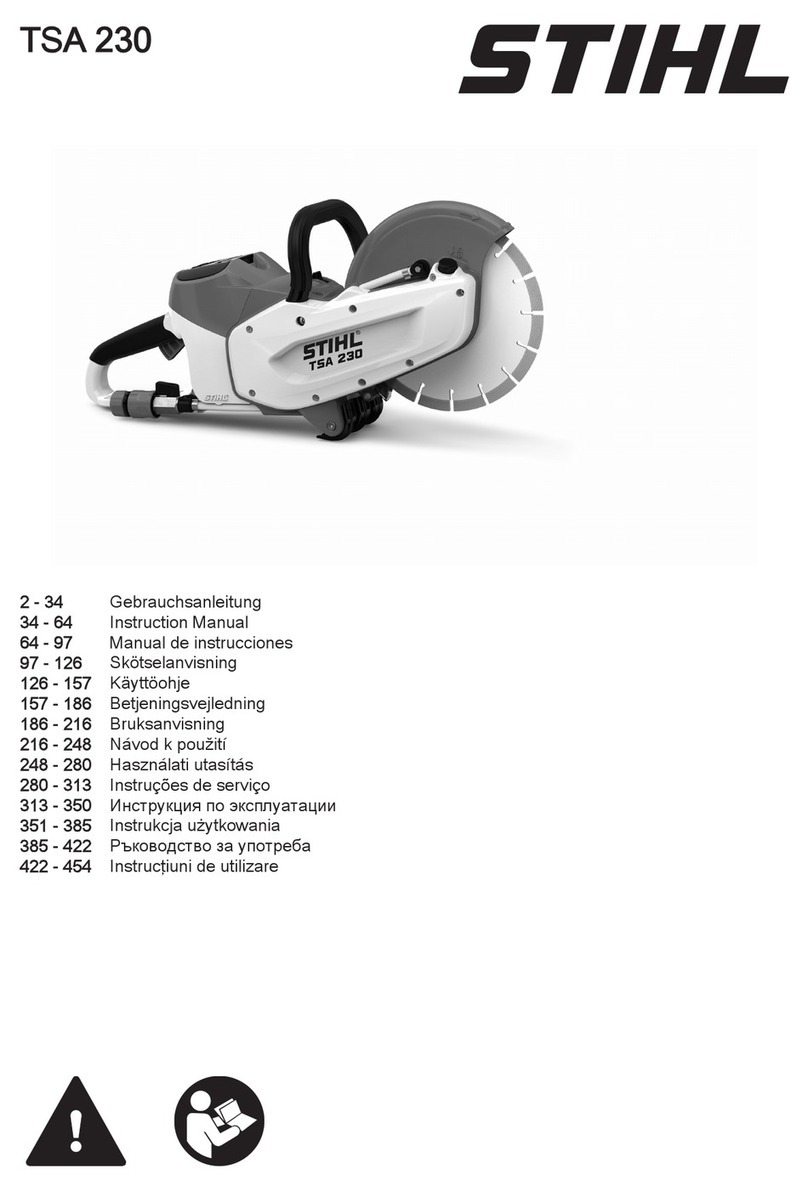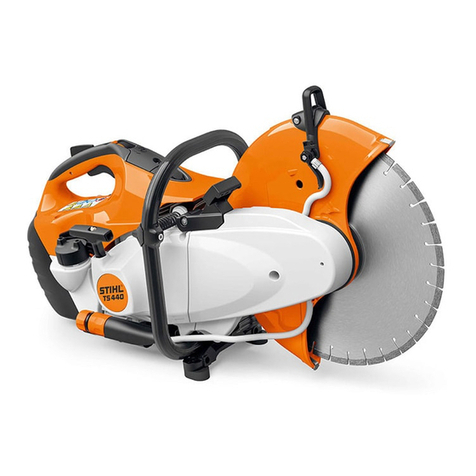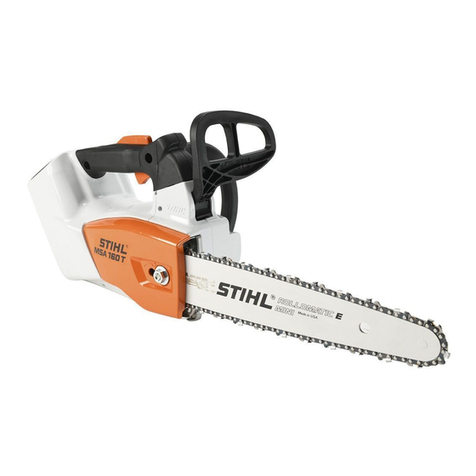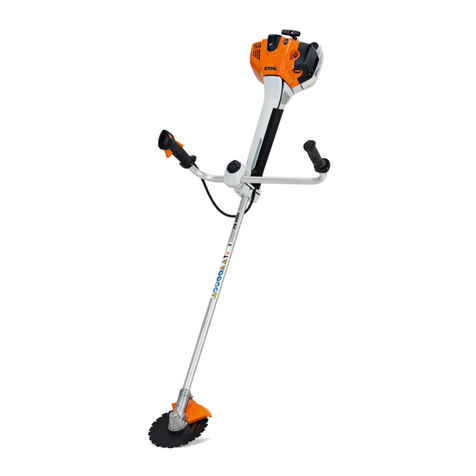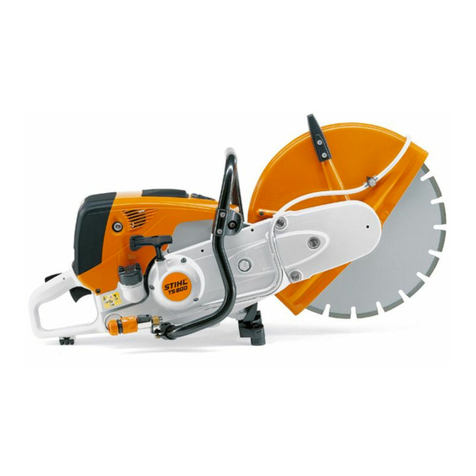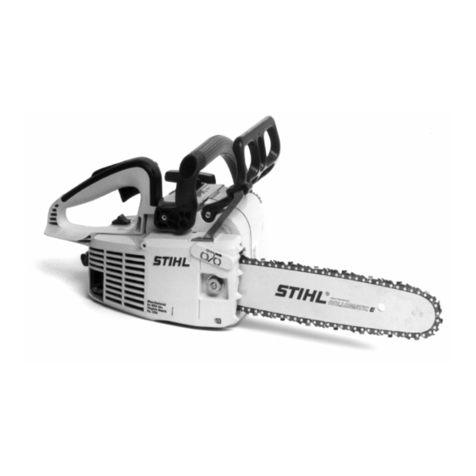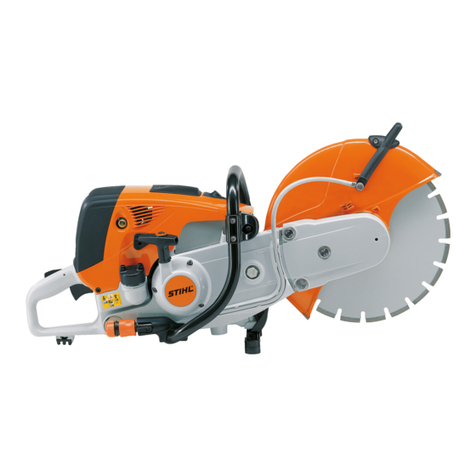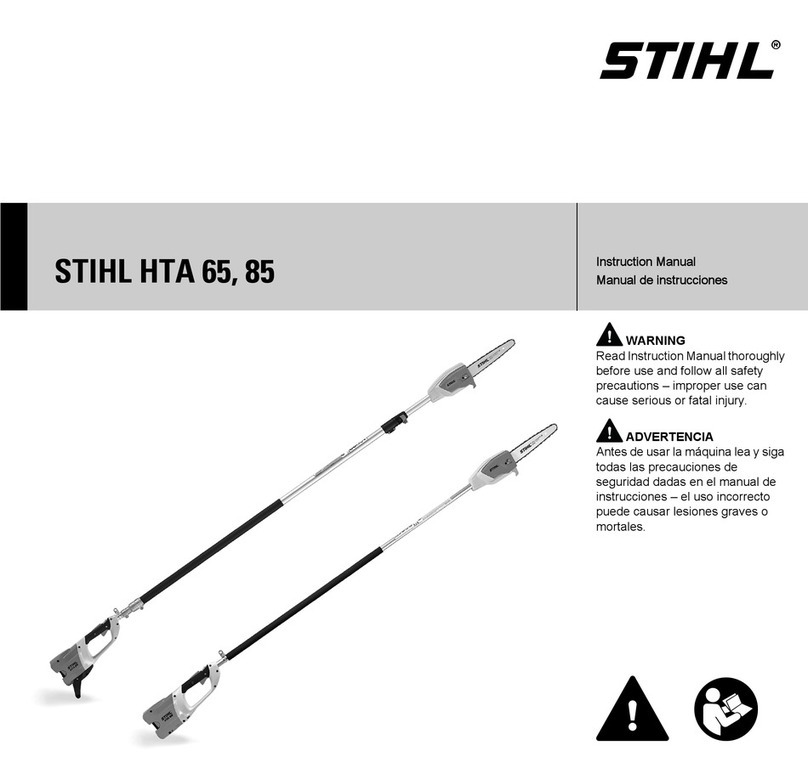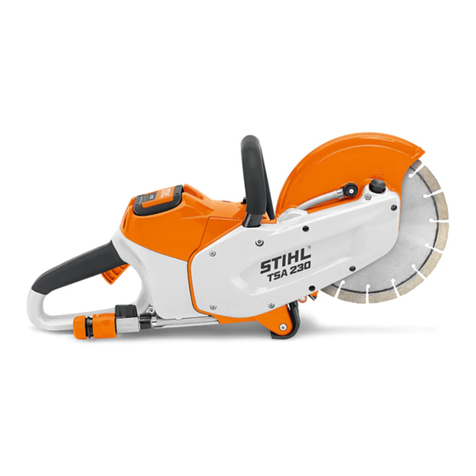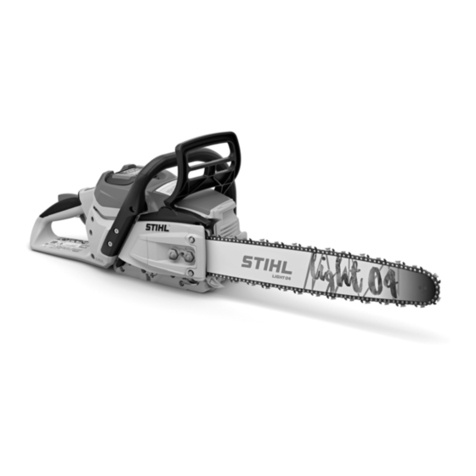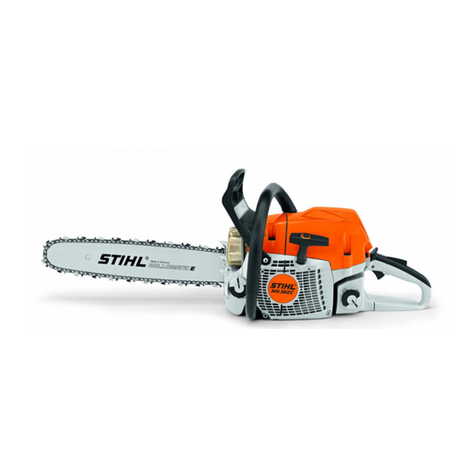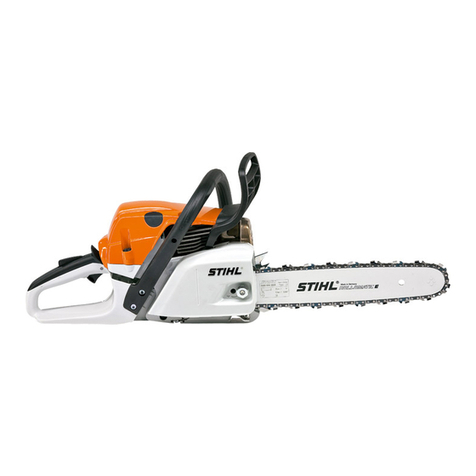
3GS 461
Always use original STIHL
replacement parts.
They can be identified by the STIHL
part number,
the logo STIH)
and the
STIHL parts symbol (
The symbol may appear alone on
small parts.
Storage or disposal of fuel
Collect fuel in a clean container and
dispose of it in accordance with
environmental regulations.
Routing the leads
In principle, press all electrical leads
into the guides using the wiring tool
5910 890 4000.
1.2 Safety precautions
Specific national safety regulations
and the safety instructions in the
instruction manual must be
observed if the machine has to be
started up during maintenance or
repair work.
Fuel is highly inflammable and can
also be explosive under certain
conditions.
Do not bring any fire, flame, spark or
other source of heat near the fuel.
All work with fuel must be performed
outdoors only. Spilled fuel must be
wiped away immediately.
Test for leakage after all work on the
fuel system and engine.
Exercise extreme caution while
carrying out maintenance and repair
work on the ignition system. The
high voltages which occur can
cause serious or fatal accidents.
Suitable gloves must be worn
without fail if parts are heated for
assembly/disassembly purposes.
Improper handling may result in
burns and other serious injuries.
Always replace damaged parts.
Check dismantled parts for wear
and damage before installation,
replace if necessary.
Only use the machine with the
starter and shroud mounted –
otherwise the rotating flywheel
poses a risk of injury and there is a
risk of engine damage due to
overheating.
The chapter "Tightening Torques"
lists all components of this machine
that must be tightened with the
specified tightening torques or
coated with thread-locking
adhesive. These specifications
must be observed throughout the
Service Manual when tightening
screws and nuts as well as other
fasteners.
Fuel system – barbed connectors
Pull or push the fuel hoses, by hand
whenever possible, in the direction
of the connector in order to ensure
leakproofness of the fuel system.
Avoid damaging the barbed
connectors
– sharp-edged pliers, screwdrivers,
etc., may not be used.
Also, do not cut open fuel hoses
with a knife or similar aids.
Do not reuse fuel hoses after
disassembly, but instead always
replace them with new hoses
– fuel hoses can be overstretched
when being detached.
Mount new fuel hoses dry or using
STIHL press fluid
– apply press fluid to the ends of the
hose and the connectors, b12.
Other press fluids are not permitted
and may lead to fuel hose damage.
